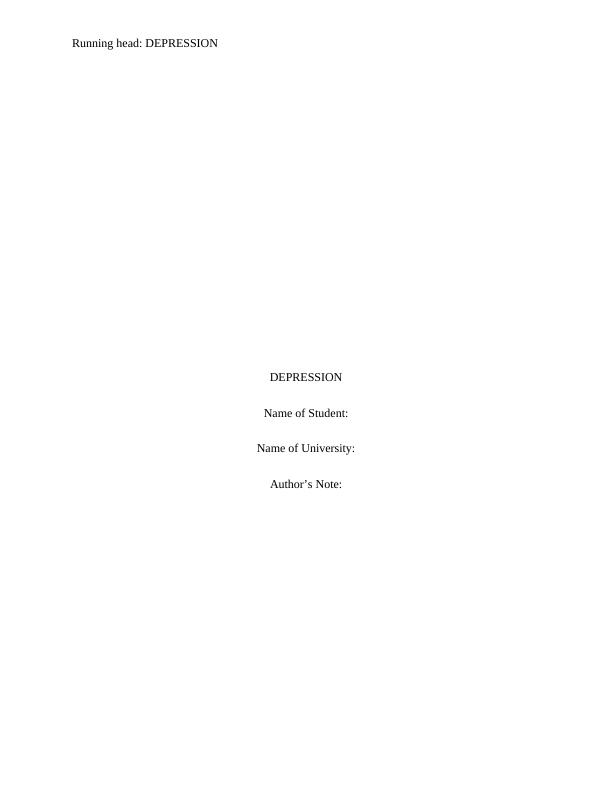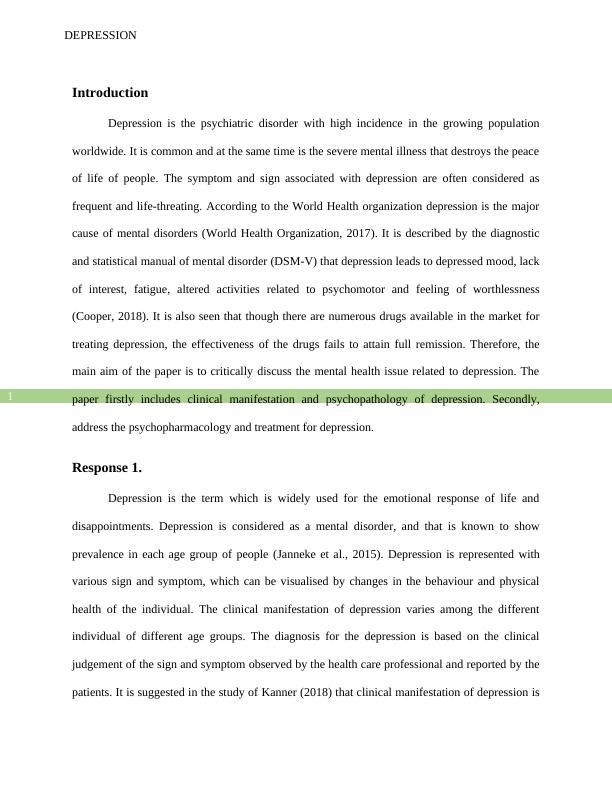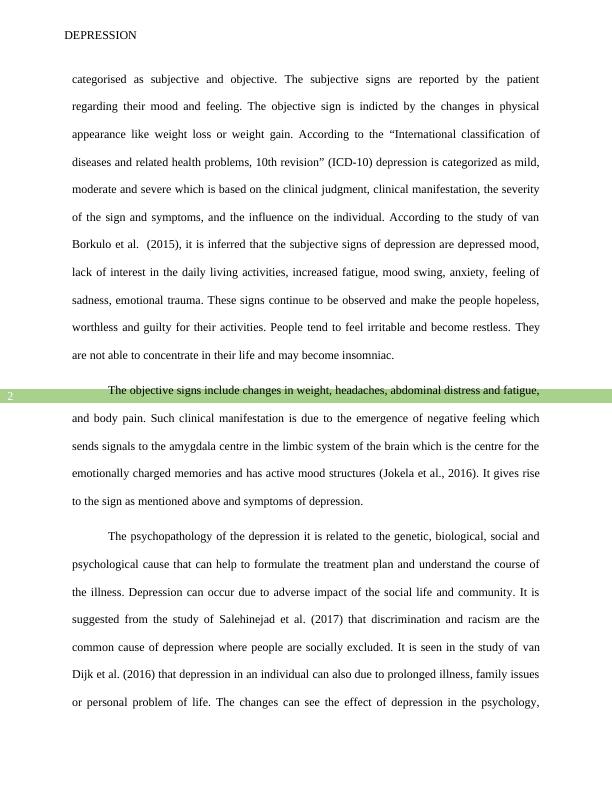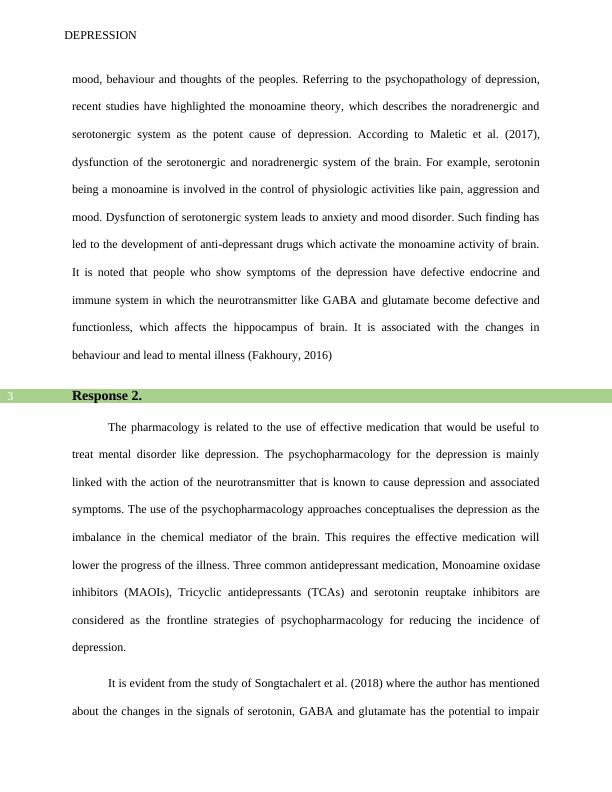Understanding Depression: Clinical Manifestation and Psychopathology
Discuss the clinical manifestations and psychopathology of a chosen major mental illness, explore psychopharmacology and other treatment options.
12 Pages3430 Words498 Views
Added on 2022-11-30
About This Document
This article provides an in-depth understanding of depression, including its clinical manifestation and psychopathology. It explores the impact of depression on mental health and discusses various treatment options.
Understanding Depression: Clinical Manifestation and Psychopathology
Discuss the clinical manifestations and psychopathology of a chosen major mental illness, explore psychopharmacology and other treatment options.
Added on 2022-11-30
ShareRelated Documents
End of preview
Want to access all the pages? Upload your documents or become a member.
Psychiatric Health and Nursing: Understanding Depression and Antidepressant Medications
|12
|3453
|318
HCS103 | Individual Field of Practice
|8
|2301
|22
Mental Healthcare Assignment (Case Study Analysis)
|9
|2452
|377
Depression
|13
|4307
|65
The case study is about a man named Munny, who is of Cambodian origin
|10
|2723
|15
Depression: Biopsychosocial Factors, Treatment Interventions, and Ethical Implications
|11
|3036
|379




